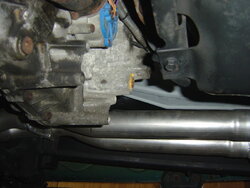1998 Explorer 4.0 SOHC
Bought it with a melted alternator/wiring harness from a junkyard for $1,000
Fixed it, drove it for two weeks, then I boosted it.
Started with an M90 supercharger kit from www.Bansheesuperchargerkit.com
Upgraded to an M112 Lightning supercharger that was a prototype kit.
Next was the M122 off a 2012 GT500
I have reached 20 lbs of boost (with ARP head studs) and a 12.83 in a quarter mile.
Pictures
1. How it looked when I brought it home.
2.The M90 supercharger installed
3.The GT500 supercharger installed
4.How it looks now
5.Wheelie





Bought it with a melted alternator/wiring harness from a junkyard for $1,000
Fixed it, drove it for two weeks, then I boosted it.
Started with an M90 supercharger kit from www.Bansheesuperchargerkit.com
Upgraded to an M112 Lightning supercharger that was a prototype kit.
Next was the M122 off a 2012 GT500
I have reached 20 lbs of boost (with ARP head studs) and a 12.83 in a quarter mile.
Pictures
1. How it looked when I brought it home.
2.The M90 supercharger installed
3.The GT500 supercharger installed
4.How it looks now
5.Wheelie


















